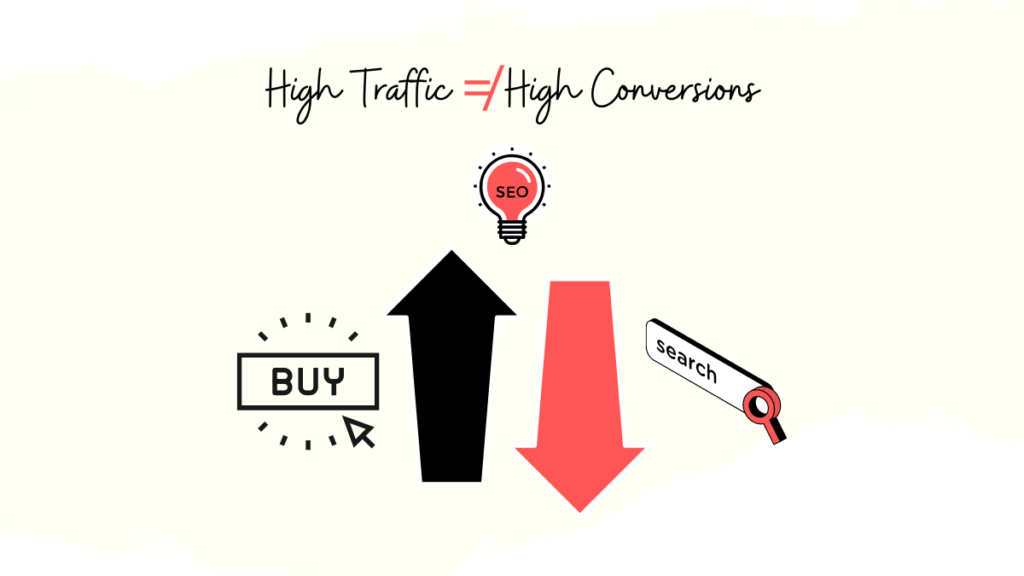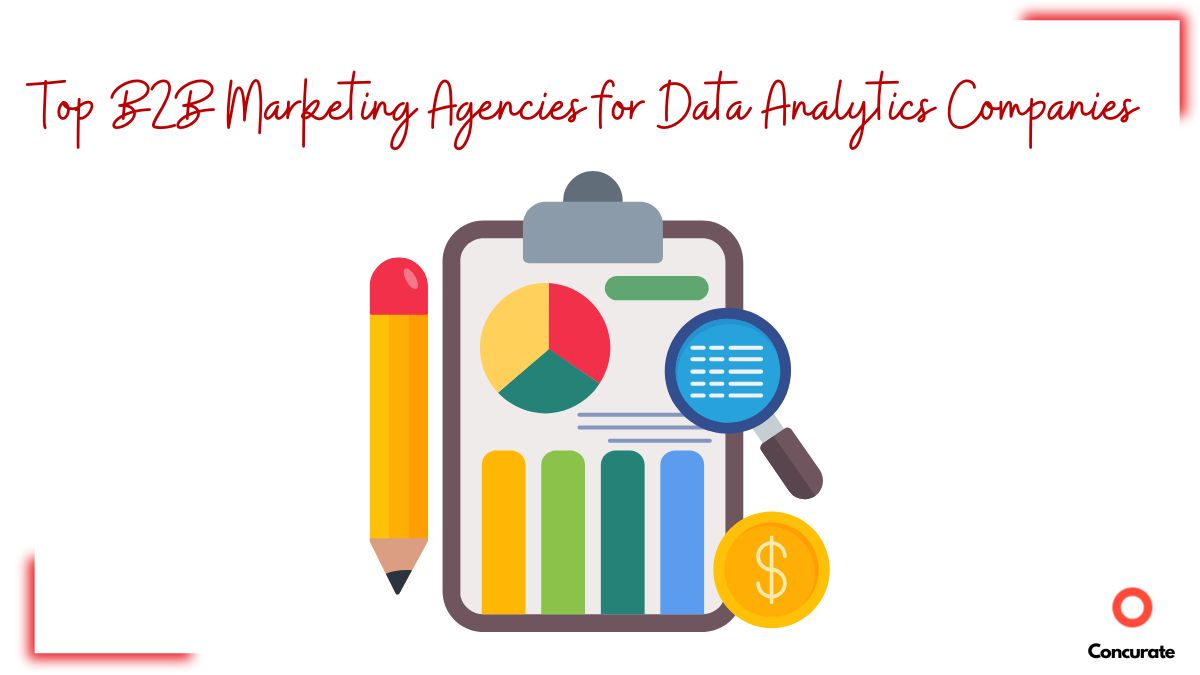Let’s consider a scenario where you’re a new SaaS startup in the CRM (customer relationship management) space. As the business owner, founder or marketing manager, you might feel spooked at the prospect of competing with the big-name players. You ideally want to rank higher on industry-standard keywords, like “CRM software”.
While your intentions are well-founded, here’s the kicker: how do you rank higher than your established competitors like Salesforce, HubSpot, etc.? You question how a small enterprise such as yours can beat them at content marketing, considering they have huge budgets and a well-oiled content creation marketing machine churning out 30+ blog post content pieces a month. How do you outrank the competition on search engines and gain visibility?
How do you optimise your content marketing strategy if you’re a small to medium-sized SaaS business? The typical keywords that you might consider writing pieces of content around will have high difficulty levels. Additionally, you’ll be fighting for places against the domains of competitors having a higher number of references as well as higher “authority”. As you can tell, it will take inordinate amounts of time and money to crack the code and “rank” higher.
The Usual Content Marketing Strategy
Marketing managers and business heads usually focus on high-volume queries in the hopes that higher visibility will eventually lead to flow down the funnel and convert some leads. There is a problem with this approach, though. While these keywords/queries have a lot more people searching for them, they necessarily do not have a high buying intent. These keywords are not aiming to take away the pain of the prospects. Key learning is this: Highest Volume of Traffic ≠ Highest Volume of Conversions. We propose a different strategy centred around pain points and high buying intent.
Buying Intent Keywords SEO Strategy
What Is Buying Intent Keywords SEO Strategy?
In this strategy, you should consider adopting a mindset that turns the usual way of conducting business on its head. What is usually followed is to focus on keywords with the highest volume and ease to rank for. You’ll benefit from shifting your focus from increasing traffic to increasing leads and signups for your product.
It’s the kind of shift we explored through Bevel’s $10M story, showing how intent-led content can turn visibility into real inbound momentum.
The Winning Formula
To make your journey easier and inexpensive, target keywords by deploying the following three facets:
#1 – High Search Volume
These are keywords that people are searching for in droves. Say, “HubSpot”, “HubSpot alternatives”, etc.
#2 – Low Keyword Difficulty
Considering you’re competing with HubSpot and Salesforce in the CRM space, keywords like “‘Your Product’ vs HubSpot” and “‘Your Product’ vs Salesforce” will tend to have lower keyword difficulty.
#3 – High Intent Keywords
Essentially, you’re attacking keywords and topics that discuss solutions to the problem which the searcher is trying to solve.
This approach will help you create the kind of content pieces and target keywords that better match the buyer’s intent as they pass through the buyer’s funnel. This approach will help you better differentiate and outrank even the most formidable of competitors on search engine result pages.
Pro tip: If you need 30 standout SaaS growth hacks to attain double the growth for your SaaS business, fill out the form below!
Questions To Identify Buying Intent Keywords
In order to ideate and identify buying intent keywords, your best course of action is to have an in-depth understanding of your prospects and customers. This approach will help you accomplish your goals because while the rest of the competition is focused on traffic, you’ll be able to assist and help your prospects and customers through well-researched pieces.
Here are some questions to ask your clients and customers to help you identify high-intent keywords to target:
#1 – What Problem Is Your Tool Trying To Solve?
This question will help you to target the right keywords when someone is researching for solutions that your product is aiming to solve.
#2 – What Alternatives Are Prospects Currently Searching For?
This question will help you to identify who your customers consider as your competitors and alternatives.
#3 – How Would Prospects Describe Your Product To Someone Who Knows Nothing About It?
This question will help you to target the right keywords when someone is describing your product. This can help you to even target keywords such as the personas you’re catering to.
#4 – What Are The Top Benefits Your Product Offers?
This question will help you target the right keywords for different use cases and the benefits your customers can expect to gain from using your product.
#5 – How Will Prospects Search For Your Product?
This question will help you to target the right keywords when someone is searching for your product.
With our bases covered, let’s find out which content pieces will work best for your objectives.
Types of Content Pieces That Work
Long-tail marketing “refers to the large number of products that sell in small quantities, as contrasted with the small number of best-selling products.” By going after long-tail high buying intent keywords, you’re able to beat out high-volume low buying intent keywords.
In order to better illustrate our point, we’ll be giving you actionable examples from the work Concurate has carried out for its client, Triangle IP.
#1 – Comparison Pieces
This way, you’re comparing your product to your top competitors. By creating a content piece comparing Triangle IP’s flagship product with competitors like Salesforce and Jira was able to rank first on the search engine result page by using this approach.

#2 – Best Products Lists
Using this approach, you provide prospects and customers with a ready-reckoner list of the best products in the category that they’re searching for. A content piece covering the best tools in Triangle IP’s industry was able to rank third on the search engine result page by using this approach.

#3 – Alternatives Tools Lists
This content piece helps your prospects and customers look for alternatives to your competitors’ products. A content piece covering the top alternatives to one of Triangle IP’s competitors was able to rank second on the search engine result page using this approach.

#4 – Use Cases Pieces
By creating such pieces, you guide customers and prospects on solving a business problem they’re facing while also pitching your product as a potential solution. A content piece covering the essential features of products in Triangle IP’s domain was able to rank second on the search engine result page using this approach.

Takeaways
You should consider prioritising producing these pieces of content aimed at high buying intent before going after keywords and search queries that are catered towards bringing in a high volume of traffic. In summary, these are the steps that will benefit you to get the most ROI for your SaaS from your content marketing efforts:
- Shifting your focus from increasing traffic to increasing leads and signups for your product.
- Targeting keywords with high search volume, low keyword difficulty and high buying intent.
- Gathering an in-depth understanding of your prospects and customers to ideate and identify buying intent keywords.
- Creating pieces that compare, list options, share alternatives, and guide customers in their buying journey.
If you’re curious how SaaS brands like 8×8 attract users organically, check this out.
About Us
We are a content marketing agency that brings business, not just website traffic. We believe in creating useful and meaningful content relevant to your target audience. This content helps your target audience find you instead of you chasing them.
If your organisation wants to explore content marketing to bring you more business, let’s connect over a short call. Block our calendar today!
Recommended Read: 14 Affordable SEO Services Helping Small Businesses Win In 2025







